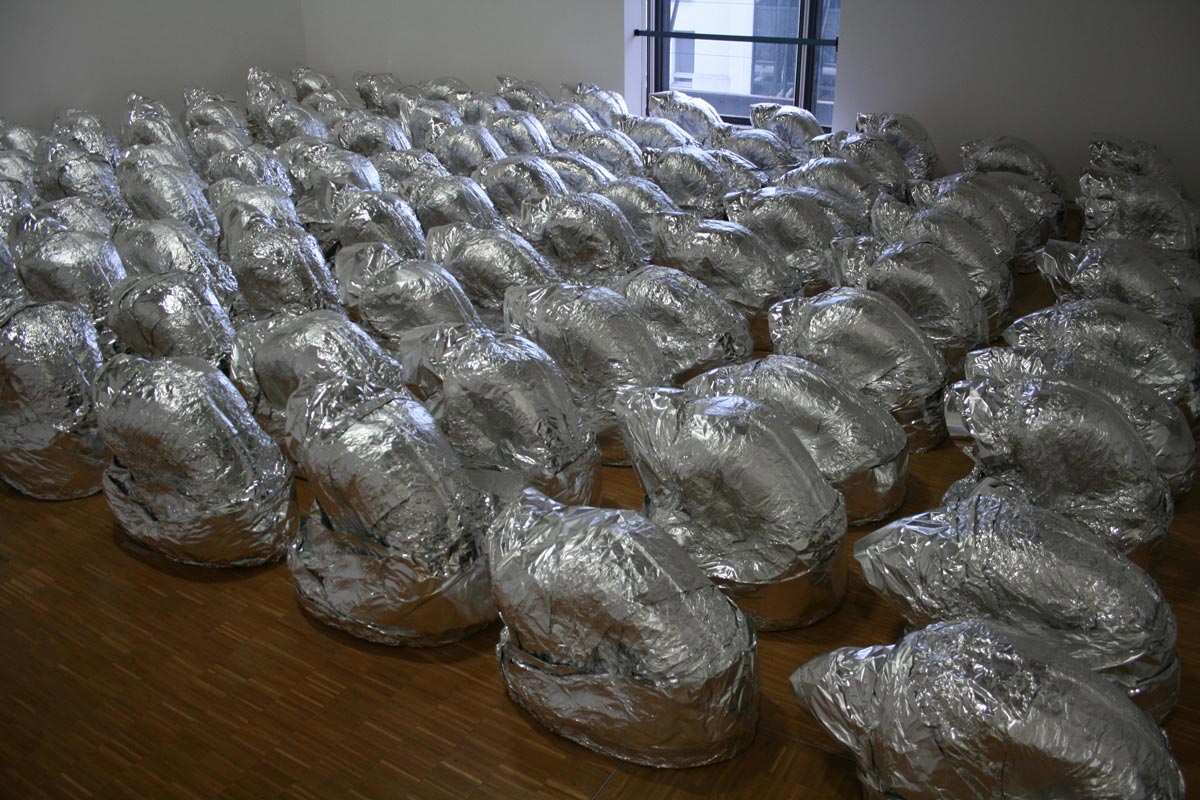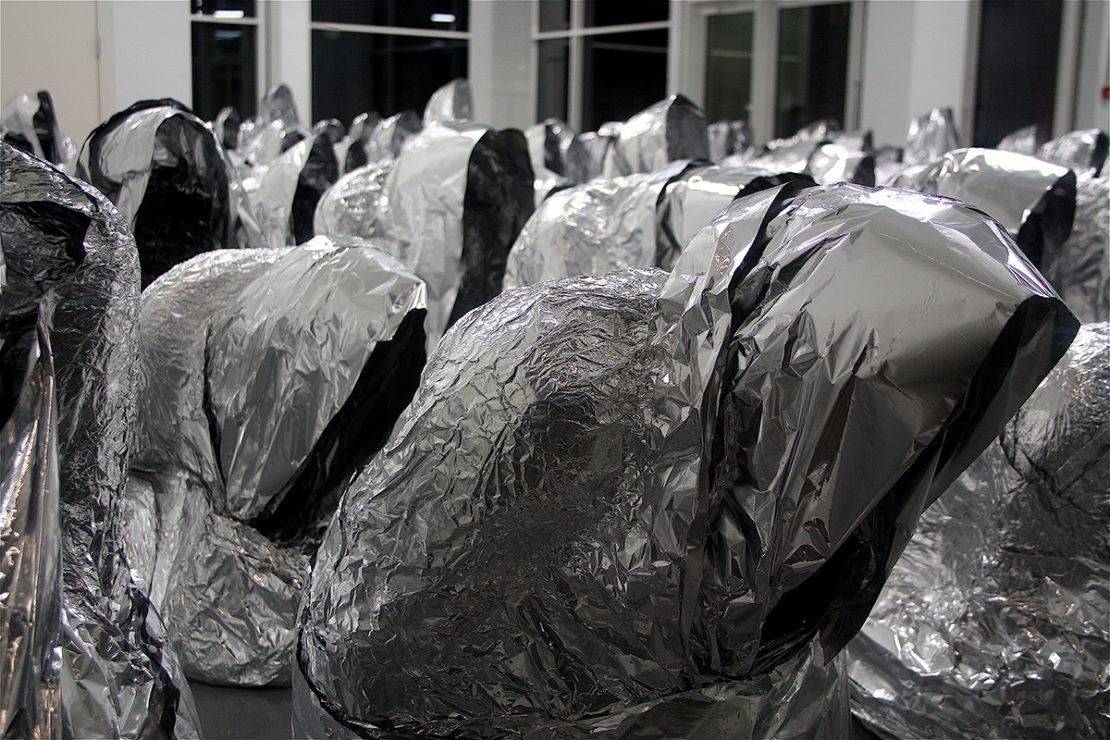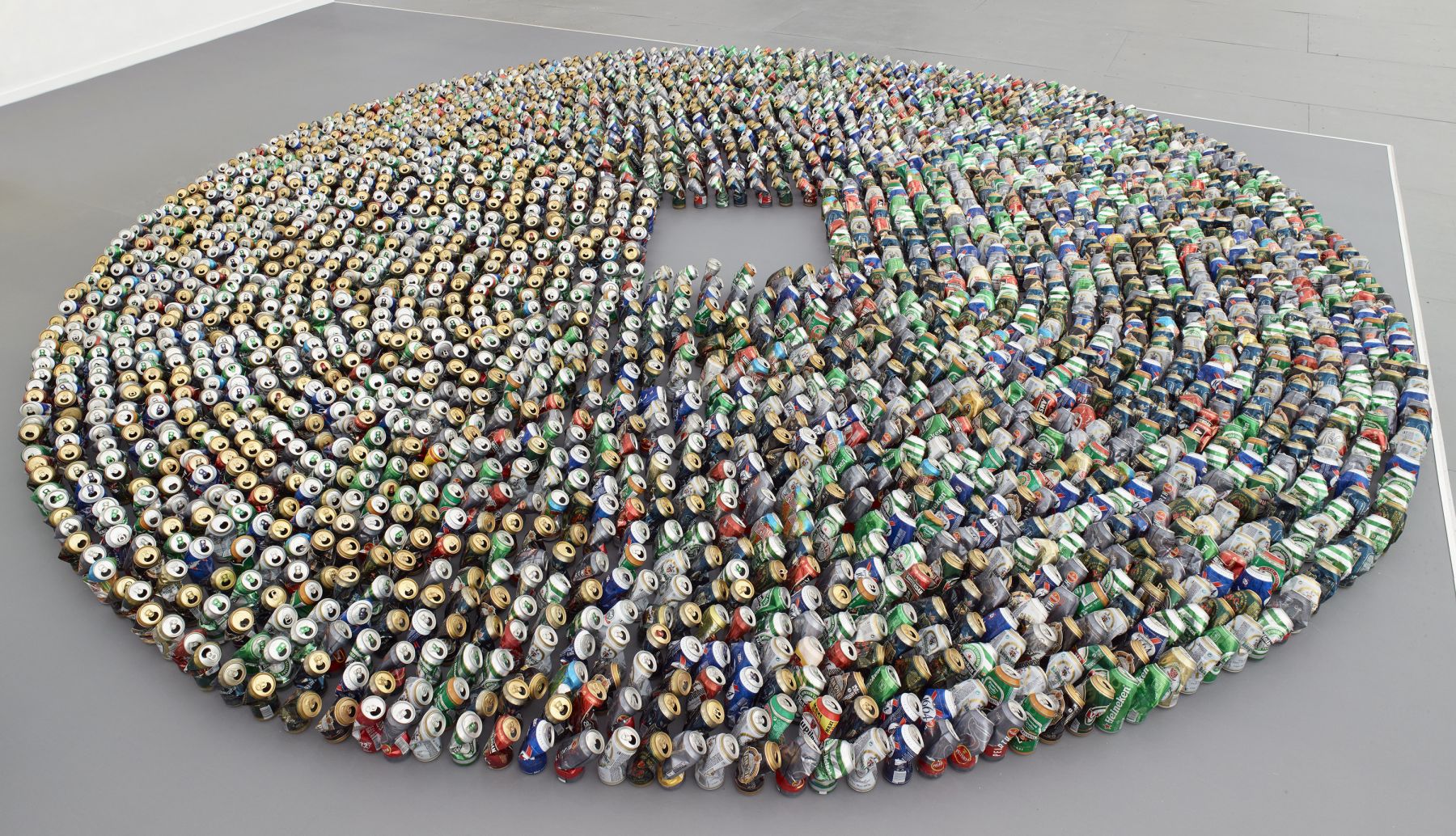Kader Attia is a French-Algerian artist in his late 40s who has recently been featured at the MCA Sydney. The exhibition is now moving to Melbourne.
Being raised in both Paris and Algeria, he is interested in in-betweeness and representations of the self and the other in colonial and postcolonial politics and art. Another major theme is injury and repair and many of his works reference the damaged faces of ancient sculptures and the surgical treatment of soldiers with facial injuries. This is quite a compelling dimension in the recent exhibition.
Emptiness and the void are further themes within Attia’s practice and this is what I want to pay attention to today.
In 2007 Attia produced a major installation Ghost (2007) comprises of 160 aluminium-foil casts of kneeling women in prayer.

This year it was produced again at the MCA .
The experience of the work changes over time.
You approached it from behind, curious about what you will see and then the figures turn out to be empty shells once viewed in reverse.

The work has a certainly solemnity.
Reflecting on Ghost (2007) artist Kader Attia noted, ‘I’m fascinated by the devotion shown by people praying, in any religion. It’s the idea that when they pray, they transform the space. It becomes silent. After this, it [returns to] what it was again.’
One critic has written what I experienced with the work.
'In Ghost, a large installation of a group of Muslim women in prayer, Attia renders their bodies as vacant shells, empty hoods devoid of personhood or spirit. Made from tin foil - a domestic, throw away material - Attia’s figures become alien and futuristic, synthesising the abject and divine. Bowing in shimmering meditation, their ritual is equally seductive and hollow…'
Yes, the work shows respect for devotion, but also concern about hollowness.
As I skimmed through websites and images later to fill out my appreciation of Kader Attia I came across this work.

Empty aluminium forms—beercans—make reference again to Islamic practice.
Here’s a description I found:
'Halam Tawaaf, created in 2008 and first shown at the gallery in 2014, inverts the traditional, counterclockwise-oriented “haram tawaf,” which refers to the seven circumambulations required of Muslim pilgrims around the Kaaba, a cuboid building at the center of Mecca’s most sacred mosque, Al-Masjid al-Haram. This ritual is intended to represent the harmony between those who believe in God.'
This work by Attia has been understood as a comment on the place of alcohol in Islam but, placed alongside Ghost, it seems to reinforce the potential hollowness of ritual.
In both works the vessels are empty. There is no substance, no content.
They are cheap, disposable consumer objects. And human religious practice seems closer to an object of satire than something worthy of solemn engagement or submission.
We are left with a good question. What is it that can make prayer and devotion sadly hollow and empty?
